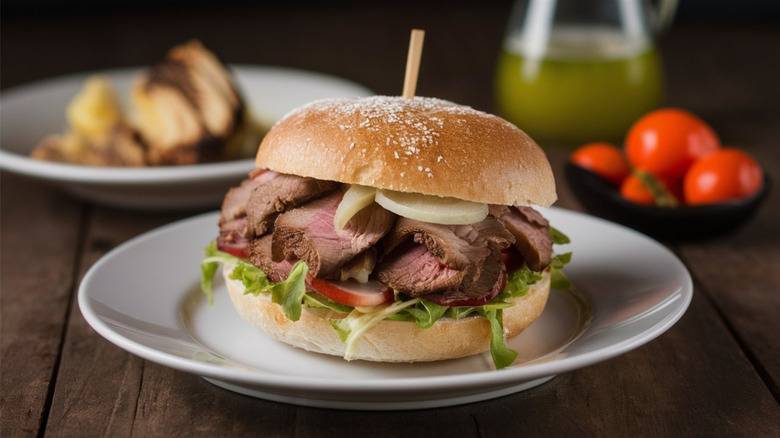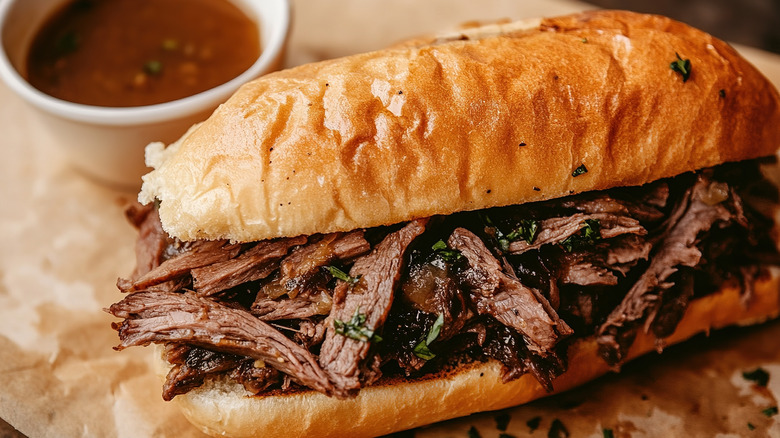How Beef On Weck Became Buffalo's Juicier, Saltier Take On The French Dip
Buffalo chicken wings are the upstate New York city's most famous culinary contribution — and part of Gordon Ramsay's ideal last meal — but Buffalo also boasts another iconic food that flies under the radar. Called beef on weck, it's a juicy and meaty sandwich beloved by locals that's a close cousin of the French dip. But unlike its famous relative, it's mostly unknown outside the region.
Beef on weck is roast beef piled on a kummelweck roll — "weck" for short — topped with horseradish sauce, with both meat and bun dipped in classic au jus. The sandwich is served with more jus for dipping. The kummelweck roll is similar to a Kaiser roll, but with pungent caraway seeds and coarse salt on top, and gets its name from the German "kummel" meaning caraway and "weck" for roll.
The origin of beef on weck is hazy, but broadly accepted lore is that German immigrant baker William Wahr came to Buffalo in the 1800s with the kummelweck recipe. From there, a popular story is that a bar owner deciding on food to sell patrons landed on roast beef sandwiches on the salt-topped rolls, hoping customers would get thirsty and drink more beer. However, local restaurant Schwabl's claims to have the original, which they've been serving for over 100 years. Whatever the true history, beef on weck was popular enough in Buffalo by 1901 that it was served at the Pan American Exposition held there that year.
Making beef on weck and how it differs from a French dip
The kummelweck roll is what makes beef on weck unique. It accents the meat with crunchy saltiness and a rye-bread-like flavor from the caraway. It also has a crusty outside with a soft interior that soaks up jus when the top or both cut halves are dunked, but doesn't get soggy and fall apart. The roast beef is typically a round or sirloin roast, slow-roasted rare and sliced thin.
The dipping jus is made from the meat's pan drippings with beef broth, aromatics like garlic and onion, and other ingredients like red wine and herbs, adding tasty juiciness to the roll and beef. The finishing horseradish sauce is a mixture of prepared horseradish, garlic, and mayonnaise, or the meat can be topped with just the spicy horseradish, a flavorful complement for other cuts of beef like steak, too.
Beef on weck and a French dip are both roast beef on a roll served with dipping jus, but there are key differences between the two. The kummelweck roll makes Buffalo's favorite sandwich saltier than a French dip, which comes on a French roll or baguette, and adds caraway flavor. It can also be juicier, since beef on weck's roll is always dipped before serving, but a French dip can be ordered "dry" with un-dipped bread and side jus only. Its other options are: single dip, with the roll's top half dipped; double dip, with both halves dipped; or wet, with the roll entirely dunked and briefly left in the jus.


